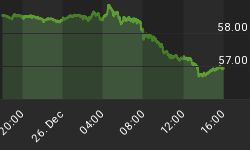Signs Of The Times:
"Binge Stirs Credit Fear
"Borrowing Binge Fuels U.K. Economic Worries
DEARTH OF CREDIT
The full understanding of credit and its cycles has been provided by the Austrian School of Economics. Its leading exponent has been Ludwig von Mises and some of his comments bear witness to today's one-way excesses. It is imperative to have an understanding of credit that works in both financial and tangible asset booms.
"An increase in the quantity of money or fiduciary media is an indispensable condition of the emergence of a boom. The recurrence of boom periods, followed by periods of depression, is the unavoidable outcome of repeated attempts to lower the gross market rate of interest by means of credit expansion. There is no means of avoiding the final collapse of a boom brought about by credit expansion. The alternative is only whether the crisis should come sooner as a result of voluntary abandonment of further credit expansion, or later as a final and total catastrophe of the currency system involved.
The breakdown appears as soon as the banks become frightened by the accelerated pace of the boom and begin to abstain from further credit expansion. The change in the banks' conduct does not create the crisis. It merely makes visible the havoc spread by the faults which business has committed in the boom period.
The dearth of credit which marks the crisis is caused not by contraction but by the abstention from further credit expansion. It hurts all enterprises - not only those which are doomed at any rate, but no less those whose business is sound and could flourish if appropriate credit were available. As the outstanding debts are not paid back, the banks lack the means to grant credits even to the most solid firms. The crisis becomes general and forces all branches of business and all firms to restrict their activities. But there is no means of avoiding these consequences of the preceding boom.
Prices of the factors of production - both material and human - have reached an excessive height in the boom period. They must come down before business can become profitable again. The recovery and return to "normalcy" can only begin when prices and wage rates are so low that a sufficient number of people assume that they will not drop still more."
The Austrians did not distinguish between financial and tangible asset booms, and did not provide any examples or a forecasting model.
The latest FOMC stuff indicated the Fed was professionally worried about “inflationary' pressures, which was keeping administered rates up.
The irony is that typically the senior central bank's changes in administered rates are a number of months behind the change in short-dated market rates of interest.
Since the high of 5.18% on February 23 the 3-month treasury bill has plunged to 4.74%. This is beginning to look like rather a fast move that senior central banks will dutifully follow.
As we noted in December 2000, interest rates going up indicates that the boom is on and that falling rates indicate the boom is over.
What's more, the bigger the boom the more dramatic the decline in short-dated interest rates.
















